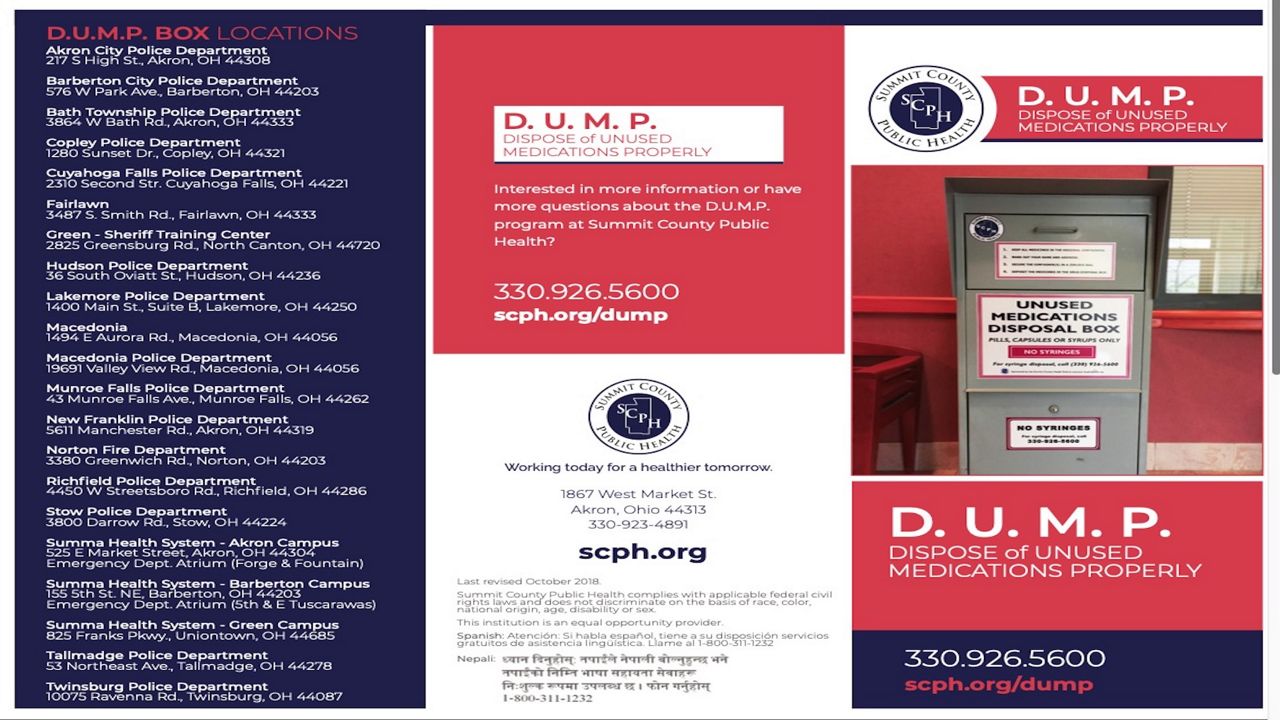Summit and Cuyahoga counties were recipients of millions of dollars in an out-of-court settlement as a result of litigation against opioid distributors and a drug maker in 2019.
To bring the community together to help guide the county’s strategy, an Opioid Abatement Advisory Council was created, which Shapiro said has spent countless hours making decisions about where resources should go that will make a difference in residents’ lives. Guidance from this group directed millions of opioid settlement dollars to location organizations, the county said.
The county also spent $2 million on emergency-room programs aimed at treating addiction, after Summit County logged more than 1,000 overdose visits in 2020, according to Summit County Public Health data.
Summa Health System’s First Step Opiate Addiction Treatment Program is up and running and Recovery’s in Reach program is set to open at Cleveland Clinic Akron General, she said.
The county allocated $500,000 to the Akron Community Foundation to establish the Opiate Small Grant Program fund, Shapiro said. The fund distributes grants of up to $25,000 to nonprofits that directly assist those battling addiction.
“We're looking at big things, and we're looking at the everyday small things that we can do to make a difference in people's lives,” Shapiro said. “And we are greatly appreciative of the fact that everybody in this community has come together around this issue and is trying to make a difference.”
Summit County Medical Examiner Dr. Lisa Kohler said fentanyl, methamphetamine and cocaine are among the top abused drugs there.
Crime scenes have shown those drugs are usually purchased individually but are used in combination, she said, which is often deadly, as users don’t know what they’re taking or how much they’re ingesting.
Most overdoses occur in 30 to 40 year olds, she said, although those overdosing have ranged from ages 21 to 71. Most of the county’s overdose deaths have been in Akron, followed by Barberton, Cuyahoga Falls, Stow and Coventry, she said.
One trend is a rise in overdose deaths among young Black men, she said. The number has been increasing since 2018 and is continuing in 2021, but the rate of increase so far this year is less than last year, she said.
One main theme underscoring the county’s approach to battling addiction has been prevention and harm reduction, which Health Commissioner Donna Skoda and several other officials underscored during the event.
That approach includes the county’s expanding Narcan program, which is a remedy than can reverse an overdose in progress. Several sites across the county deliver Narcan, while others have it available, Skoda said.
“We want to help people get on that road to recovery, but you have to survive,” Skoda said. “We want to keep folks alive long enough for any harm-reduction strategy that we can do, because that person could then have the opportunity for treatment. We all know, which I'm sure you'll hear from a new director of the ADM board, recovery does work.”
The arrival of fentanyl between 2019 and 2020 pushed up overdose-related ER visits to current levels, which are rising, she said.
Since the beginning of 2021, Summit County has had an increase in overdose-related ER visits, with 736 to date, Skoda said. That averages two to four ER visits per day.
Another harm-reduction approach is to keep unused drugs out of homes, Skoda said. Summit County Public Health offers the D.U.M.P. Program, with drop boxes around the county where unused medications can be dropped for incineration, Skoda said.
The Deterra System relies on a pouch that destroys medications once they are dropped in, she said. The pouches are also available at locations around the county.
Summit County also offers a needle-exchange program called Summit Safe Syringe Exchange and fentanyl test strips are available to help users determine how much of the drug is in what they buy on the street, she said.
“If you have one disease, then you wake up one day, and you also find out you have HIV or hepatitis,” she said. “We're trying to prevent the spread of other communicable diseases as well.”
Summit County has nearly 35 locations where drugs can be dropped off, or Deterra bags picked up, including all Acme Fresh Market pharmacies, said Greta Johnson, Summit County Communications director and assistant chief of staff.
Opioid Abatement Advisory Council Member Bishop David Parker said the county shouldn’t let the pandemic overshadow the opioid epidemic.
“I believe we as a community are so strong in our partnerships that we can deal with both at the same time, because both of them are impacting our families,” he said. “Addiction affects all of us in our community. It takes lives from us; vital resources that we cannot lose. It is our opportunity right now.”
He encouraged anyone battling addiction to reach out for help.
Alcohol, Drug Addiction and Mental Health Board Executive Director Aimee Wade talked about the role of the ADM board, which she said works hand-in-hand with the medical examiner and the other agencies.
“There's a full continuum of treatment resources right here in Summit County that are available whether or not an individual has insurance or an ability to pay,” she said. “So what I would like to do now is to offer hope to our community; hope that there's resources that our system of providers and community partners are open and have the capacity to help again regardless of ability to pay.”
Anyone who seeks help with addition, no matter what drug or substance is the source of the addiction, can get help at any of the county’s agencies, the officials said.
Call the ADM Board addiction helpline at 330-940-1133, or visit the website. Residents can also sign up online to have a Narcan kit sent via USPS.







